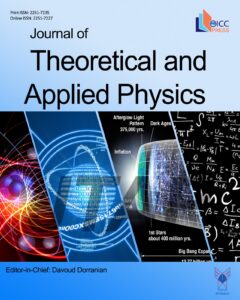Microstructure evolution in zirconium carbide thin films at different substrate temperatures
Authors
- Ali Heidarnia 1
-
Hamid Ghomi
*
 1
1
Abstract
Zirconium carbide (ZrC) is promising candidate materials in advanced nuclear reactors as fuel cladding and
plasma facing materials. It can employ to increase ductility and fracture toughness of tungsten as prominent
candidate of plasma facing materials in ITER and DEMO future fusion reactors. In this study, ZrC thin films
were deposited through DC magnetron sputtering at different substrate temperatures. Argon and acetylene
are respectively employed as the sputtering gas and reaction gas to produce ZrC from a Zr target. The phase
and structure, crystallite size, displacement density, microstrain, and lattice’s constant of the produced thin
films were determined using X-ray diffraction (XRD) analysis. Raman spectroscopy was also used to identify
various structures and chemical bonds. Furthermore, the analysis of Raman peaks associated with amorphous
carbon bonds revealed that the ratio of sp3/sp2 carbon bonds increases by increasing temperature from 100°C
to 180°C, which substantially affects the hardness of the thin films. Field Emission Scanning electron microscopy
(FESEM) was used to measure the cross-sectional area and thickness of the thin films, and it was discovered
that increasing temperature enhances the thickness of the thin films. The elemental analysis of ZrC thin films
that was performed using X-ray energy dispersive spectroscopy (EDS) demonstrated the atoms that constitute
the thin film, and their changes with temperature variations.



